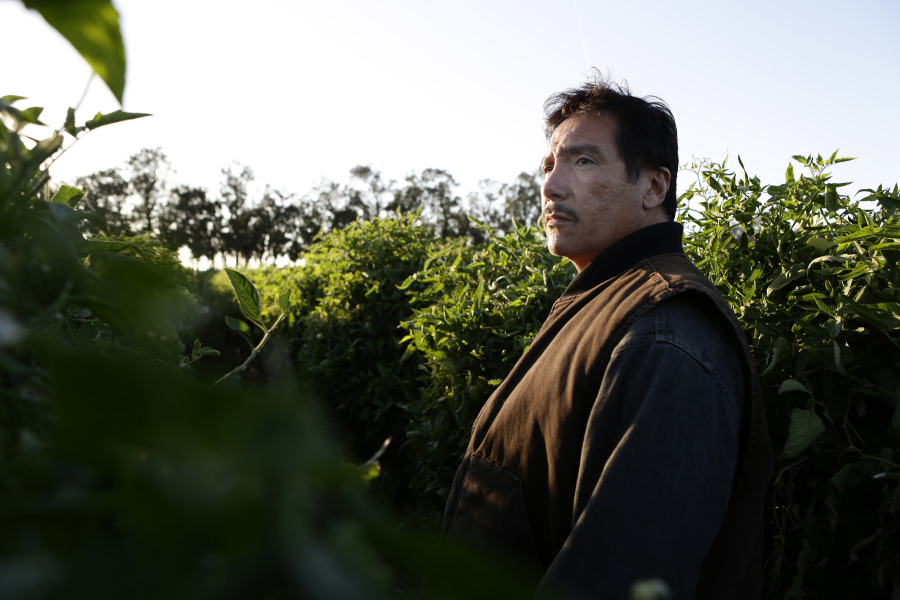CHARLOTTE, N.C. — Not three minutes into ABC’s new season of “American Crime,” which premieres at 10 p.m. Sunday, a group of Mexican men are shown clambering through a hole in a wall separating the United States from Mexico.
This tips off viewers that the third installment of creator John Ridley’s dramatic anthology series is going places this spring that could strike some pretty raw nerves — particularly given the current real-world political climate.
But it’s not going to California, Arizona, New Mexico or Texas.
“Carolina del Norte,” replies Luis Salazar (played by actor Benito Martinez), without at first explaining why.
And then we’re off to Guilford County — that’s home to Greensboro, N.C., for those shaky on their geography — where a collection of sober, even-handed stories unfold involving a struggling tomato farm, its conflicted owners, and the undocumented workers bound essentially by indentured servitude to keep it running; a furniture supply business trying to stave off competition from cheap Chinese manufacturers; and a social worker obsessed with rescuing victims of the sex trade.
They’re storylines with relevance and immediacy. Most North Carolinians are familiar with immigrants picking crops and the furniture woes of the state — and according to Polaris, an organization that helps run the National Human Trafficking Hotline, 181 cases of human trafficking were reported in North Carolina in 2016 (up from 112 in 2015), putting it 10th nationally.
But Ridley and executive producer Michael J. McDonald were intrigued by the idea of setting Season 3 of “American Crime” in North Carolina for a variety of other reasons as well.
“John and I are very interested in the New South — the South that is educated, the South that has a thriving economy but yet is steeped in a history of racial tension,” McDonald says. (Ridley, by the way, won an Academy Award three years ago for his script for “12 Years a Slave.”)
“We really wanted to show the collision between an older, whiter population and the new arrival of the Hispanic population. To set it in California would have been something that we’ve seen, but as the Hispanic populations are exploding in Georgia and North Carolina and other traditional Southern states, it’s a new culture clash that we wanted to expose, that we haven’t really talked about.
“What has been going on there, politically … it’s a real microcosm of America,” McDonald continues. “There’s an internal struggle right now between the left and the right, and you’re seeing it obviously in your politics with your recent gubernatorial election, and HB2. And while we didn’t reflect upon that bill, we were fascinated by the idea that a fairly conservative bill was fought so hard in a traditionally Southern state.”
McDonald says he and Ridley also were intrigued by the idea of actually filming in North Carolina. However, due to ABC parent company Disney’s objection to House Bill 2, he says “it wasn’t even an option for us … they were not allowing any filming in North Carolina.” So, shooting took place primarily in Southern California, with second-unit work done in South Carolina.



